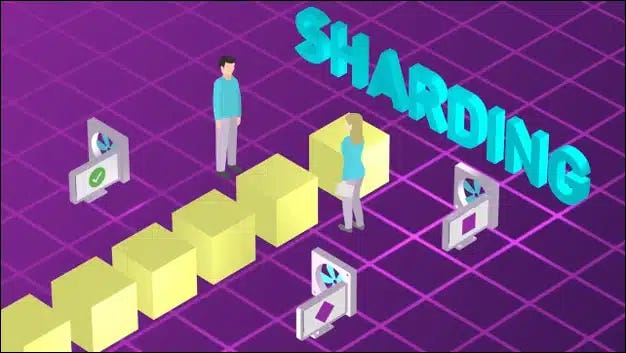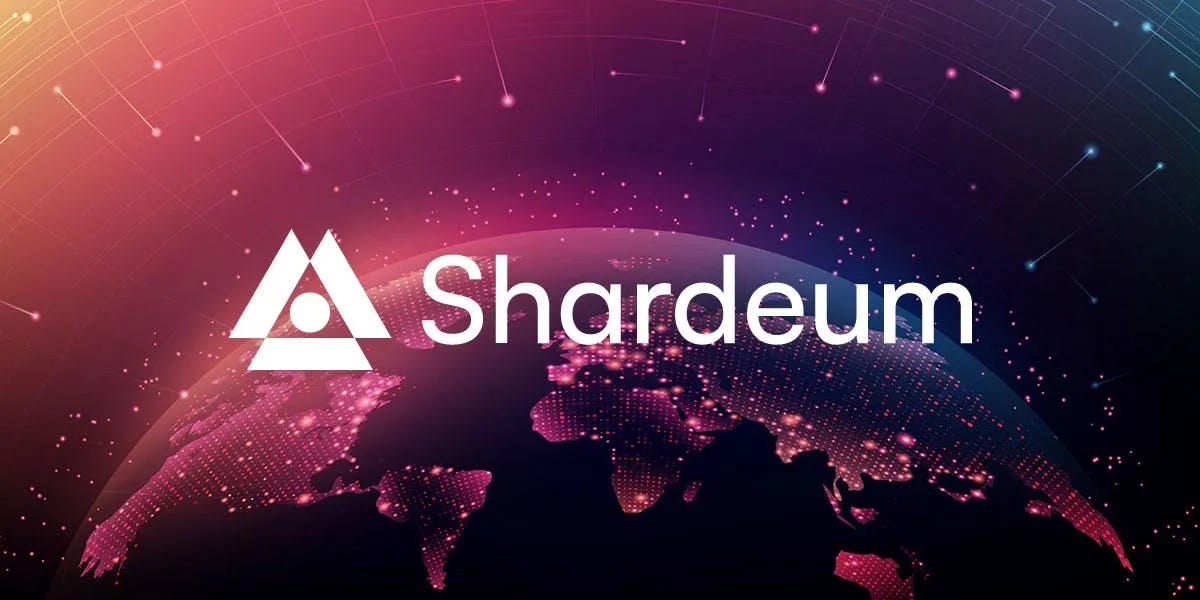Note: Shardeum has a separate blog that is dedicated to discussing what composability is especially from a blockchain standpoint. However let’s summarize this here so it will be easier for us to understand and connect the various discussion points we will be discussing in this blog about the significance of atomic and cross shard composability in public blockchain networks.
What is Composability in Blockchain?
Composability in blockchain refers to the ability to easily combine and integrate different pieces of code, such as smart contracts and decentralized applications (dapps), to create new and innovative systems. Think of it as building with LEGO blocks: you can take existing pieces and snap them together in various ways to create something entirely new.
This concept is powerful because it allows developers to leverage existing code and infrastructure, saving time and effort. Instead of starting from scratch every time they want to create something, developers can reuse components that have already been built and tested. This promotes rapid development and fosters a collaborative ecosystem where developers can share and build upon each other’s work.

Composability is a critical feature for smart contract platforms, allowing developers to mix and match components for rapid innovation. However, its success depends on both internal factors like protocol strength and external factors like security audits and scalability. Without addressing these factors, composability can become a liability rather than an asset.
What is Atomicity in Blockchain?

Atomicity is a fundamental concept in computer and data science, especially within the context of transactions. It refers to the property where a transaction or operation is indivisible or all-or-nothing. In simpler terms, atomicity ensures that a transaction is either executed completely or not executed at all, without any partial or intermediate states.
In the context of databases, atomicity guarantees that if any part of a transaction fails or encounters an error, the entire transaction is rolled back or aborted. This ensures that the system remains in a consistent state, with no changes applied if the transaction cannot be completed successfully.
Atomicity is a key component of the ACID (Atomicity, Consistency, Isolation, Durability) set of properties that ensure reliability and integrity in database systems. By adhering to the principle of atomicity, systems can maintain data consistency and reliability, even in the face of errors or failures during transaction processing.
What is Atomic Composability in Blockchain?
Atomic composability is a crucial concept in distributed database systems like blockchain and directed acyclic graphs (DAGs), enabling the seamless combination and execution of multiple operations or transactions. In this framework, all operations must either succeed together or fail together, typically within the boundaries of a single shard or blockchain.
This concept extends the principle of atomicity to the composability of operations within the context of blockchain networks. Just as consensus mechanisms are employed in blockchain networks to establish agreement on transaction validity and ordering, specific mechanisms such as messaging, coordinator, and routing protocols are utilized to maintain composability within these networks.
At a technical level, achieving atomic composability requires meticulous attention to details such as consensus mechanisms, smart contract implementation, scalability solutions, transaction verification processes, and rollback mechanisms. It’s essential for blockchain networks to have a robust design and deployment of these components at both the protocol and application layers to ensure seamless atomic composability.

Cross-sharding refers to the process of interacting and exchanging information between different shards within a sharded network. In a sharded system, data is partitioned into smaller subsets called shards, each of which is responsible for processing a portion of the overall workload. While sharding improves scalability by distributing the workload across multiple shards, it introduces challenges related to communication and interaction between these shards.
In the context of blockchain networks, cross-sharding becomes essential when transactions involve data or smart contracts residing in different shards. Without cross-shard communication and composability mechanisms, transactions that span multiple shards cannot be executed seamlessly, potentially limiting the functionality and usability of the network.
Sharding is a technique used to enhance the scalability of distributed systems, such as blockchains, by dividing data into smaller, more manageable units known as shards. Each shard operates independently, processing a subset of the overall workload. While sharding itself doesn’t necessarily disrupt composability, it can potentially hinder the ability of different parts of the system to communicate and collaborate effectively. Introducing sharding adds complexity to the network architecture and implementation, often necessitating the development of mechanisms for facilitating cross-shard communication and composability.
Cross-Shard Composability in Blockchain Systems

In blockchain technology, sharding involves dividing a network into smaller, more manageable units called shards. Each shard contains a subset of the network’s data and transactions, allowing for more efficient processing and increased throughput. By assigning nodes to specific shards, the computational load is distributed, leading to improved performance.
Cross-shard composability is the ability of different shards within a blockchain network to interact seamlessly. Since each shard operates independently, achieving cross-shard composability requires implementing protocols and mechanisms that enable communication and data exchange between shards. This may involve implementing a universal account system, message-passing protocols, or establishing side chains or bridges to connect different shards. These mechanisms facilitate data and asset transfers between shards while maintaining consistency across the entire network.
By enabling cross-shard composability, blockchain networks can handle more transactions and achieve higher throughput without compromising security or decentralization. This allows for scalability improvements while maintaining the integrity and functionality of the network as a whole.
Essential Factors for Cross-Shard Composability in Blockchain Networks
Cross-shard transactions
Cross-shard transactions enable single transactions to involve multiple shards in a blockchain network, crucial for scalability and complex smart contracts. Mechanisms ensuring ACID properties across all shards are essential for their success.
The Need for Composability
Composability is essential for enabling seamless interaction of smart contracts and transactions across different shards, facilitating cross-shard composability. Without it, blockchain networks would be confined within their shards, limiting their utility and adoption.
Two-Phase Commit Protocol for Cross-Shard Transactions
The Two-Phase Commit protocol ensures atomicity in cross-shard transactions by employing a coordinator to initiate the transaction. The coordinator communicates with all involved shards to ensure readiness for commitment. If all shards agree, the transaction proceeds; otherwise, it is aborted.
Routing Cross-Shard Transactions
Routing is the mechanism used to direct cross-shard transactions to the appropriate shards. It involves identifying the shards involved and determining the optimal route for execution. This is facilitated by routing tables and message-passing protocols, enabling seamless communication for cross-shard composability.
Coordinators in Cross-Shard Composability
Coordinators play a crucial role in managing cross-shard transactions and ensuring their atomicity, consistency, isolation, and durability. They facilitate communication between shards involved in a transaction and are vital for achieving cross-shard composability. Coordinators initiate cross-shard transactions, coordinate with involved shards for commitment readiness, and execute a two-phase commit protocol for atomicity assurance. Additionally, they maintain transaction state information and coordinate with other coordinators for transactions spanning multiple blockchain networks.
However, it’s important to note that coordinators can introduce centralization into the blockchain network, potentially compromising security and decentralization. They also require additional computational resources and may introduce latency into transaction processing. Furthermore, a single point of failure may arise if the coordinator experiences failure or compromise.
Ensuring Composability Between Shards
To ensure cross-shard composability in a blockchain network, it’s crucial to establish protocols and mechanisms facilitating communication and asset transfer between shards. This entails implementing routing mechanisms to direct transactions accurately and creating a universal account system accessible across all shards.
Furthermore, employing message-passing protocols like inter-shard communication (ISC) is essential for enabling seamless communication between shards. Additionally, maintaining a consistent state across all involved shards is vital to ensure consistency throughout the network. These measures collectively contribute to enabling effective cross-shard composability within the blockchain ecosystem.
Metadata Management in Cross-Shard Transactions
In cross-shard transactions, metadata encompasses transaction-related information not included in the payload, such as transaction status and routing details. This data is crucial for maintaining atomicity, consistency, isolation, and durability.
Effective metadata management involves designing protocols and mechanisms to handle metadata across all shards. This includes implementing accessible metadata storage systems, establishing metadata standards and formats, and ensuring robust security measures to prevent unauthorized access or tampering.
By establishing robust metadata management protocols, blockchain networks can ensure the integrity and reliability of cross-shard transactions, facilitating seamless interaction between shards while maintaining data security and consistency.
Shardeum’s Breakthrough with Atomic and Cross-Shard Composability

About Shardeum
Shardeum is a special kind of blockchain network. It’s like the foundation of many cryptocurrencies and smart contracts. But what sets Shardeum apart is how it handles things.
Firstly, it’s really good at handling lots of transactions without making them expensive. Transactions are ordered in a time based way on Shardeum (first come first serve basis) to maintain chronological consistency
This means you can do things on Shardeum without worrying too much about high fees. Also, Shardeum is designed to be really decentralized and secure. This means that no single person or group controls it, making it safer for everyone. When it comes to ordering transactions, Shardeum does it based on time. This means that the first transaction that comes in gets processed first, which keeps everything in the right order. What’s really interesting about Shardeum is how it verifies and agrees on transactions. Instead of doing this in big groups like other blockchains, it does it for each transaction individually. This helps keep things moving smoothly. Lastly, Shardeum has its own special way of making decisions called Proof of Quorum and Proof of Stake. This is like a combination lock that helps make sure everything is fair and secure.
In simple terms, Shardeum is a smart, efficient, and secure blockchain network that’s changing how we do things online.
Proof of Stake (PoS) is a well-known concept in blockchain, but Shardeum introduces an innovative twist with Proof of Quorum. This feature allows Shardeum to create a receipt when a majority of the consensus group agrees on a transaction. Each node in this group signs the transaction hash and shares it with others in the group. Once over 50% of the group agrees, these votes form a receipt, proving consensus on the transaction.
Moreover, Shardeum’s consensus algorithm assigns a random ‘node ID’ to validator nodes before they join the network. This node ID helps auto-rotate validator and standby nodes, making it challenging for bad actors to take over. Validators are responsible for processing transactions, while standby nodes wait for their turn.
Processed transactions are then passed to archive nodes for storing historical data. Validators only store the state of accounts they’re involved with, making it feasible for average users to operate nodes. Shardeum implements dynamic state sharding, dividing State, Network, and Transaction, and dynamically adjusts network capacity based on traffic.
Each node is assigned dynamic account spaces across multiple shards with overlaps, allowing parallel transaction processing while ensuring atomic and cross-shard composability. Autoscaling optimizes resource usage and responsiveness, ensuring immediate finality and low latency with perpetual low transaction fees.
Developers can deploy and interact with Solidity or Vyper contracts on Shardeum seamlessly, as contracts are deployed to unique shards automatically while preserving atomic composability across all shards.
How Does Shardeum Achieve Atomic & Cross-Shard Composability?
So, let’s dive into how Shardeum manages to keep things atomic and maintain cross-shard composability. Even though we’ll get a deeper understanding once their whitepaper is released and the protocol is open-sourced before the mainnet launch in Q3/Q4 2023, here’s a sneak peek.
Shardeum orders and processes transactions on a time-based way individually
Shardeum’s consensus mechanism involves leaderless and rotated nodes
Consensus is done at the transaction level (and not at the block level)
Validators on the network are assigned dynamic account spaces across multiple shards. Although dynamic state sharding requires each node to hold a different address range, there will be a significant overlap between the addresses covered by nodes with an adequate redundancy of at least 128 validators
Because transactions are processed individually, transactions that affect multiple shards does not risk the possibility of being confirmed in one shard, but getting rolled back in another shard.
Further transaction level consensus allows a transaction that affects multiple shards to be processed simultaneously by these shards which not only reduces the time to process the transaction even if it affects multiple shards, but also ensures atomic processing with very low latency and immediate finality
When a multi-step transaction is initiated in the case of complex smart contracts, it involves executing all those steps across multiple shards simultaneously. With Shardeum’s transaction-level consensus, these steps can be grouped into a single atomic transaction to ensure atomic composability
With the help of dynamic state sharding, autoscaling, optimal consensus mechanism, time based transaction ordering, Shardeum will scale linearly allowing average users to run a node on the network with negligible computational requirements
Linear scaling and auto-scaling will keep the operational cost of the network sustainable which essentially means transaction fees on the network will remain very low and constant permanently
Low gas fees enable users and developers to interact with multiple shards and execute cross-shard transactions cost-effectively while promoting increased user participation, which in turn facilitates seamless cross-shard composability
Every node/shard joining the network will increase the throughput of the network proportionally which allows Shardeum to scale limitlessly preventing congestion and transaction backlog. This directly enhances the composability on the network
Linear scaling, further, facilitates distributing the workload evenly across shards. By ensuring a balanced distribution of transactions and operations, it prevents any single shard from becoming a bottleneck or experiencing excessive congestion to allow for smooth cross shard composability
Linear scaling allows inter-shard communication protocols developed to facilitate the secure and reliable transfer of data and state information between shards, enabling seamless coordination for cross-shard composability
Since Shardeum introduces operational efficiency through linear and auto scaling, it enhances the network’s capacity to handle complex operations and interactions across multiple shards, enabling a more interconnected and interoperable blockchain ecosystem
Conclusion
In the thrilling world of blockchain, cross-shard composability stands tall as the gateway to boundless scalability and innovation. It’s not just about executing transactions; it’s about unlocking the potential for building intricate smart contracts and dApps that can revolutionize how we interact with the digital world.
Picture this: transactions seamlessly flowing between different shards, ensuring every piece of the puzzle fits perfectly, all while maintaining the utmost security and reliability. This is the power of cross-shard composability, where atomicity, consistency, and durability reign supreme across the entire blockchain ecosystem.
But achieving this level of sophistication isn’t easy. It requires a symphony of routing protocols, communication mechanisms, and universal account systems working together in perfect harmony. And yet, these are just the building blocks. The real magic lies in the underlying protocol’s efficiency and scalability — the backbone that keeps everything running smoothly.
Enter Shardeum, the beacon of innovation in the blockchain universe. With its groundbreaking technology, Shardeum is not just pushing the boundaries; it’s shattering them. From complex dApps to seamless cross-chain interactions, Shardeum is paving the way for a future where anything is possible.
So, buckle up and stay tuned as Shardeum enters its final stretch of production readiness. The journey ahead promises to be nothing short of extraordinary. Get ready to witness history in the making.
Stay updated with Shardeum
Official Website -> https://shardeum.org/
Twitter -> https://twitter.com/shardeum
Telegram -> https://t.me/shardeum
Linkdein -> https://linkedin.com/company/shardeum
